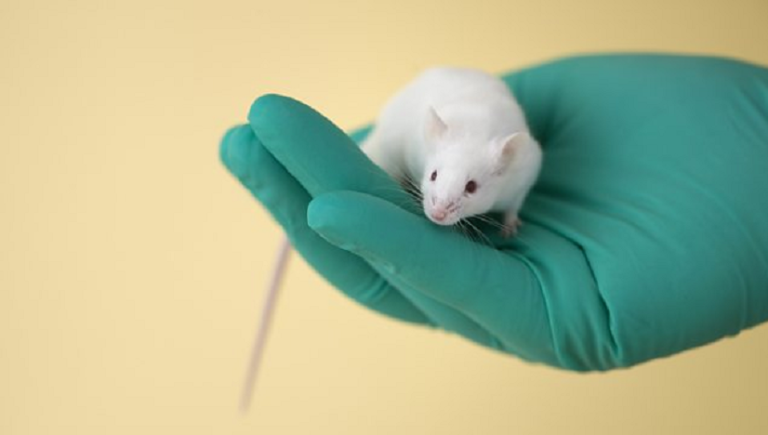On Sept. 11, 2023, the U.S. Food and Drug Administration (FDA) approved updated monovalent versions of the Pfizer/BioNTech messenger RNA (mRNA) Comirnaty and Moderna/NIAID’s mRNA Spikevax COVID-19 shots. The U.S. Centers for Disease Control and Prevention’s (CDC) Advisory Committee on Immunization Practices (ACIP) signed off on the new shots the day after FDA’s approval, recommending them for children 12 years of age and older and releasing the products under Emergency Use Authorization (EUA) for children as young as six months.1
Newsweek recently reported that Pfizer only tested its new monovalent booster shot formulation targeting the Omicron XBB.1.5 strain on a small group of mice, and the FDA has not released testing information for either the Pfizer or Moderna products.2 Last fall, FDA officials authorized distribution of the Pfizer and Moderna bivalent booster shots based on a small mice study and did not require the companies to test the bivalent formulation on humans before the shots were recommended by CDC officials for children and adults.3
The rollout of the new Comirnaty and Spikevax products is the first since the World Health Organization (WHO) and the White House declared in May of this year that the coronavirus public health emergency had ended. Distribution and purchase of the new booster shots now has been shifted to the commercial market, where manufacturers will sell their products directly to health care providers at higher prices.1
New mRNA COVID Boosters Do Not Target Currently Circulating Virus Strains
The updated monovalent booster shots, which do not target the current dominant variants Eris (EG.5) and Pirola (BA.2.86), are designed to target the Omicron variant XBB.1.5—a strain which the CDC has confirmed is already declining in the U.S.4 In a press release following the FDA’s approval, Pfizer CEO Albert Bourla said, “We expect this season’s vaccine to be available in the coming days, pending recommendation from public health authorities.”1
The latest guidance from FDA officials is that children between the ages of six months and four years should receive one or two doses of the current booster shot if they’ve received previous COVID shots. However, if a child has never received a COVID shot, the recommendation is that the child should receive three doses of the updated Comirnaty shot or two doses of the updated Spikevax shot—in addition to the dozens of doses of other vaccines recommended by CDC officials for children.5
Moderna CEO Stéphane Bancel urged Americans to get the updated COVID shots during the same appointment as their annual flu shot, even though no studies exist to prove the short- or long-term synergistic effects of the two vaccines being administered simultaneously at any age.1
FDA Shies Away from Calling Updated Vaccines “Boosters”
According to Johns Hopkins University, FDA officials have shied away from calling the latest mRNA shots “boosters.” The change in nomenclature reflects a collective approach to treating COVID similar to influenza, where everyone is encouraged to get an “annual flu shot” and now also get an annual “COVID shot” at the same time. Using the words “updated COVID vaccine” rather than “COVID booster” also emphasizes that recipients of the minimally-tested new shots aren’t just boosting existing immunity from the same previous shots, but rather a completely new immune response—from a completely new medical product—to the newly-circulating variants.6
This isn’t the first time during the pandemic that language about products labeled as “vaccines” was rewritten by federal health officials. The CDC altered the definition of the word “vaccination” shortly after the deployment of COVID shots, changing the definition from “a substance that provides ‘immunity’ to a specific disease,” to “a preparation that is administered—as by injection—to stimulate the body’s immune response against a specific infectious agent or disease.”7
According to the Associated Press, unnamed “experts” confirmed to the AP that the changes to the definition “reflect the evolution of vaccine research and technology.” The CDC told the AP in a statement that it altered the definition to “add detail and increase transparency.”7
“While there have been slight changes in wording over time to the definition of ‘vaccine’ on CDC’s website, those haven’t impacted the overall definition,” the CDC said, noting that the previous definition “could be interpreted to mean that vaccines were 100 percent effective, which has never been the case for any vaccine.”7
Ryan Langlois, PhD, a professor of microbiology and immunology at the University of Minnesota, says the CDC’s changes “make total sense,” and adds nuance following emerging vaccine developments such as mRNA technology.7 The statements came after the CDC abruptly stopped tracking breakthrough infections, or instances of vaccine failure, back in 2021—eventually only including data on breakthrough hospitalizations and deaths.
Data Shows Updated COVID Shots “Not Very Effective” Against Latest Strains
As for the latest SARS-CoV-2 variants, the Eris strain is spreading quickly, but experts allege that it’s no more dangerous than previous strains like Omicron and Delta. The other new SARS-CoV-2 variant, Pirola, is being closely watched because it appears to contain numerous mutations. Data from scientists in China shows the updated COVID shows will not be very effective against Eris and Pirola strains.
Eric Topol, MD, executive vice president of Scripps Research in La Jolla, California, worries about people who are high-risk.
The [COVID] vaccines that they’ve had are too far removed from where the virus is right now and where it’s going.²
The bivalent Comirnaty and Spikevax shots approved by the FDA last year are no longer authorized for use in the United States.5
If you would like to receive an e-mail notice of the most recent articles published in The Vaccine Reaction each week, click here.
Click here to view References:1 Constantino AK. FDA approves updated Covid vaccines from Pfizer and Moderna as hospitalizations rise. CNBC Sept. 11, 2023.
2 Mordowanec N. Was New COVID Vaccine Booster Tested on Only 8 Mice? What We Know. Newsweek Sept. 18 2023.
3 Cáceres M. Safety and Effectiveness of New COVID Bivalent Boosters Based on a Study of Eight Mice? The Vaccine Reaction Sept. 12, 2022.
4 Smith D. What to Know About the New Covid Variants. The New York Times Sept. 5, 2023.
5 Howard J. FDA signs off on updated Covid-19 vaccines that target circulating variants. CNN Sept. 11, 2023.
6 Rosen A. What to Know About the Updated COVID-19 Vaccine for Fall/Winter 2023. Johns Hopkins Bloomberg School of Public Health Sept. 14, 2023.
7 Tulp S. Experts say changes to CDC’s vaccination definition are normal. AP News Feb. 9, 2022.












